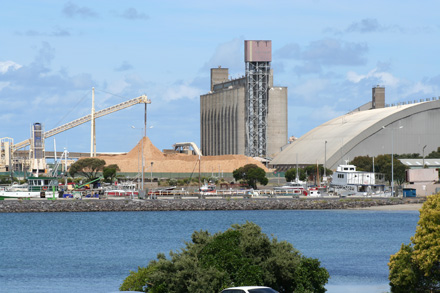
There were 272 separate vessel movements that shipped Australia’s woodchip exports in the year-ended February, with two vessels making the return trip eight times over the course of the year. Source: Industry Edge, Timberbiz
Totalling more than 7.070 million bone dry metric tonnes (bdmt) with a total grow-weight of 12.127 million tonnes (Grt), Australia’s woodchip exports were shipped on 94 individual vessels, making the 272 trips.
While the average was less than three trips per vessel, tracking data recorded and reported by Industry Edge shows that three vessels arrived and departed Australian woodchip export facilities eight times each in the year-ended February 2018.
With an average round trip of approximately 44 days, eight trips are essentially the maximum available to any woodchip export vessel plying the Australian export trade.
The JR Summer (44,567 Grt) and LBC Energy (42,744 Grt) both plied the trade between Geelong and China for the entire year.
These two ships run the Geelong to China trade exclusively, under hire to the exporter. This approach is an element of the modern trade era in which those supplying the woodchips are increasingly taking control of shipping all the way to their customer’s wharf.
Deliveries involve far less risk than was once considered the case, allowing exporters to better manage their supply chain and guarantee they can meet customer expectations, with less potential for problems created by shipping firms.
The third vessel, the Crossandra (49,720 Grt) visited Bunbury on three occasions, Portland four times and Geelong once.
Of the ports, Portland was again the busiest. For the year-ended February, it received 79 separate visits from 41 different vessels. Industry Edge estimates total exports from Portland were more than 2.100 million bdmt over the period.
Portland remains clearly the busiest of Australia’s woodchip export facilities. It is little wonder then that the region’s supply-chain from harvest through to the port remains under constant pressure to perform, and why silvicultural activity is so intense throughout the region.





